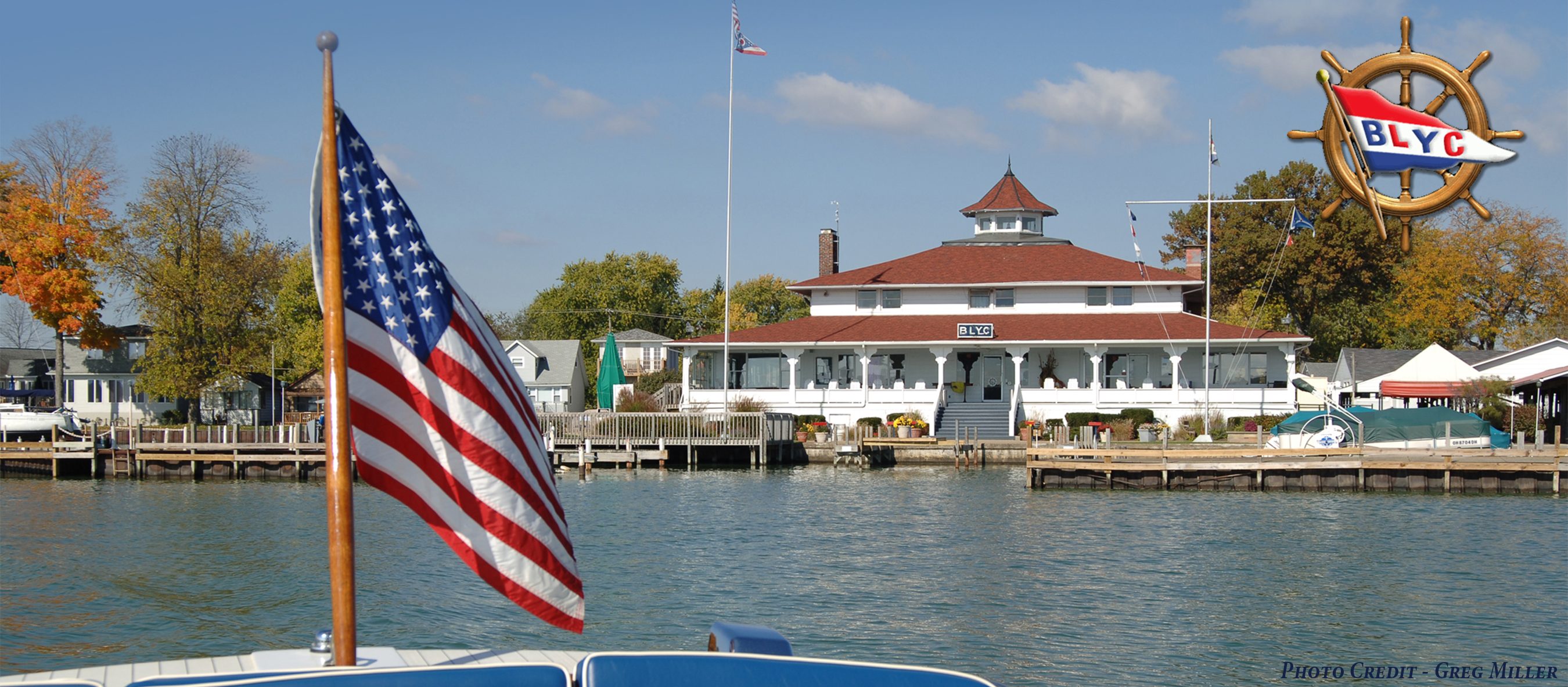Often, we focus our rules discussions only on Part 2 of the rules – “When Boats Meet.” This winter, I plan to explore the rules of Part 3 – “Conduct of a Race.” They may appear to only matter to the Race Committee, but they have significant importance to the racing sailor too.
– Steve Harris, US Sailing National Race Officer
Rule 32 - Shortening or Abandoning After the Start
There is a lot of stuff in Rule 32. While shortening a course (eliminating one or more legs) and abandoning are similar, and definitely done for similar reasons, in practice, the two are quite different in how they work on the race course.
Keep in mind, most of the rules in Part 3 are tools that the race committee can use to keep races fair, safe, and easy to manage. Rule 32 is very valuable in that sense.
Let’s look at the text of the rule…
NOTE – Rule 32 only applies after the start. Rule 27.3 allows the race committee to abandon before the start for any reason.
32.1
“After the starting signal, the race committee may shorten the course (display flag S with two sounds) or abandon the race (display flag N, N over H, or N over A, with three sounds)
- because of foul weather,
- because of insufficient wind making it unlikely that any boat will finish within the race time limit,
- because a mark is missing or out of position, or
- for any other reason directly affecting the safety or fairness of the competition,
In addition, the race committee may shorten the course so that other scheduled races can be sailed, or abandon the race because of an error in the starting procedure. However, after one boat has started, sailed the course and finished within the race time limit, if any, the race committee shall not abandon the race without considering the consequences for all boats in the race or series.”
32.2
“If the race committee signals a shortened course (displays flag S with two sounds), the finishing line shall be,
- at a rounding mark, between the mark and a staff displaying flag S;
- a line the course requires boats to cross; or
- at a gate, between the gate marks.”
“… the race committee may… abandon the race (display flag N, N over H, or N over A, with three sounds)”
Let’s start with how an abandonment is signaled.
If we look at the “Race Signals” section of the Racing Rules of Sailing, we find that Flag N is used to signal that the race is abandoned.

The N Flag always goes up with three sound signals.
In fact, it is the only signal with three sounds. As the name, abandonment, suggests, the race is over. For whatever reason, the race committee has decided to end the race.
Although the sound signal is always the same, we have three options on the visual signal.
By itself, the N-Flag means the race is abandoned and the race committee intends to resail the race. – return to the starting area.
If N is displayed over the H-Flag, the race is abandoned and boats are to return to shore for further signals.


If N is displayed over the A-Flag, the race is abandoned and there will be no more racing today.


Rule 32.1 provides us reasons that the Race Committee is permitted to Abandon a race…
“… 1. because of foul weather, …”
This is primarily for safety considerations. Foul weather might be an approaching storm, but it also could include high winds or sea state. Either way, if conditions are not favorable, certainly if they are not safe, the race committee may abandon the race.
There is frequently some debate on when, and under what conditions the race committee should or even must abandon a race. Note that the rule is permissive, not prescriptive. The racing rules provide no guidance or direction on conditions. It is always the skipper’s responsibility to decide whether or not to sail.
Rule 3
“The responsibility for a boat’s decision to participate in a race or to continue racing is hers alone.”
That noted, there are limits to what is reasonable based on a number of factors – type of boats sailing, experience/age of the competitors, etc. Some one-design classes have very specific upper wind limits and other restrictions in their class rules that provide guidance on this matter. Other times, there is little or none.
“… 2. because of insufficient wind making it unlikely that any boat will finish within the race time limit,…”
Often, but not always, a time limit written into the Sailing Instructions. Usually, this is a time limit for the first boat to sail the course and finish. When that is the case, absent other scoring provisions in the SIs, the race committee’s only choice at the expiration of that time limit is to abandon the race (RRS 35).
Here is when the shortening part of Rule 32 provides a convenient option, which we will discuss in next week’s post.
Note that the rules don’t prescribe that the time limit must expire before the race committee can abandon. The use of the word unlikely gives them the leeway to do so earlier than the time limit if, in their judgment, they determine it to be the best option.
“… 3. because a mark is missing or out of position, or…”
In all honestly, this is a horribly unfortunate reason to have to abandon a race. The rules provide the race committee with options to replace a missing or out of position mark. However, we all know that things don’t always go the way we plan. There are times, that problems simply cannot be corrected. Given the race committee permission to abandon in this situation, while unfortunate, gives the opportunity to regroup, reset, and try again.
“… 4. for any other reason directly affecting the safety or fairness of the competition.”
- An error in the starting procedure
- Normally, in this situation, if the race hadn’t started, a postponment would be in order. If the race had started, a general recall would be best.
- However, if it had been more than a few seconds since the start, an abandonment is likely the more appropriate option.
- A significant windshift that favors some, but not all, of the fleet – particularly on the first windward leg.
- It’s easy to dismiss windshifts as “just part of sailboat racing.” However, doing so can also introduce chance as a significant factor, rather than skill
- An obstruction in the course
- This is certainly an area of degree of how much it affects fairness or safety.
- Does a disabled powerboat in the course affect the fairness of the competition? Possibly.
- Does a capsized boat affect the fairness? Does it affect safety?
- Traffic
- In areas with active ports and shipping channels, traffic, particularly commercial traffic can introduce significant safety concerns.
- While this type of traffic is typically scheduled and, therefore can be anticipated, things don’t always go according to schedule.
- What else? The list is probably endless. What is important is that the race committee is considering these and other possibilities and are prepared to act appropriately. Safety and Fairness are PRIMARY responsibilities of the RC.
What do I do if the RC signals an abandonment?
Obviously, stop racing and, depending on what exact abandonment signal was given (N, N over A, or N over H) either return to the starting area or to shore.
Stopping racing is not, however, your only consideration. Most race committees attempt to use all the tools at their disposal to “save a race” – shortening, changing the length of a leg, etc. Abandonment is often used as a last resort, and as such, often due to safety concerns. Watch the weather! Look around the course! If you have one, monitor your VHF radio! Is there a safety concern to be aware of and possibly act on?
That brings up another rule, new in the 2021-2024 rulebook…
Rule 37 – Search & Rescue Instructions
“When the race committee displays flag V with one sound, all boats and official and support vessels shall, if possible, monitor the race committee communication channel for search and rescue instructions”
This is new in the most recent rulebook, but it reflects a renewed focus on safety both on the part of World Sailing and its member National Authorities (e.g., US Sailing). Likely, it is more directed towards “big boat” sailing where VHF radios are standard, often required, equipment and they are more likely to be sailing in challenging conditions. Still worth pointing out here as abandonments are often related to safety concerns.
We plan on holding a “Mini” Safety at Sea Seminar at the Club later this winter focused on safety and safety procedures. It’s always good to think ahead about these things.
Finally… there’s this to consider…
“… However, after one boat has started, sailed the course and finished within the race time limit, if any, the race committee shall not abandon the race without considering the consequences for all boats in the race or series.”
Again, this seems very vague and nebulous. It’s likely intended to be so as well. The Racing Rules of Sailing give Race Committees a wide latitude in decision making – one simply cannot anticipate every possible situation that might occur on a race course. It seems like the rule should read something like this… “after one boat has sailed the course and finished within the race time limit, if any, the race committee shall not abandon the race.” On the surface, that seems to be more “fair.” (I’m not 100% sure, but I believe in (much) older versions of the rules, it may have been that way. The problem, however, is that it ties the race committee’s hands and forces any questions, etc. to go to the Protest Committee and a Redress Hearing – not always the most expeditious option – should the RC still choose to abandon a race after some boats have finished.
Consider the following examples:
Late in a race, after some boats have “started, sailed the course, and finished within the time limit,” a strong storm blows in over the racing area. Perhaps it was an unexpected pop-up, or it was anticipated, but arrived early. It doesn’t really matter. The RC determines that it is unsafe to continue racing for those still on the course and abandons.
I would think most of us agree that this would be a proper action of the RC, even if it is unfortunate for those who have already finished.
After a race in which there was a significant, permanent wind shift (60°+), the Race Committee “second guesses” their decision to let the race continue. They decided that that fact, along with their inaction to preserve the race by changing a leg, or shortening the course, made the race inherently unfair and abandons the race after the fact.
The RC is perfectly within their authority in doing so. The rule only requires them to consider the consequences… it doesn’t proscribe any specific action that they may or may not take based on that consideration.
That said, the better course of action for the Race Committee may have been to “wait and see.” If the competitors have an issue with the fairness of the race, they are permitted under Rule 62.1 to request redress based on an “improper action or omission” by the race committee. If the competitors don’t request redress, but the PRO still feels strongly about the race turning out to be unfair, he or she is permitted under Rule 60.2 to request redress on behalf of the competitors.
While it may seem like a “cop-out” to say “let the Protest Committee make the decision and take the heat,” it also may be the more prudent choice. RC’s aren’t always perfect, and good RC’s know that and are willing to admit (or at least consider other viewpoints) when they have perhaps made a mistake.
These are just two examples (purposely a bit obvious as to the proper action.) There are a lot of “gray areas” in making the decision to abandon after the finish. The US Sailing Race Management Handbook offers the following advice to race committees:
“Because of the significance of a race committee’s decision to abandon a race in which one (or more) competitor has finished, the only justifiable reason for taking such action is safety considerations.”
As there are exceptions to any rule, there are certainly exceptions to this advice as well. But, safety is quite obviously a good reason to abandon a race after some boats have finished. Abandoning after all boats have finished likely should be a function of the Protest Committee such that the determination of “fairness” and “consequences” is not left to just one person (the PRO), but rather several people who have the knowledge, expertise, and judgment to make a well-informed (even if unpopular) decision.
